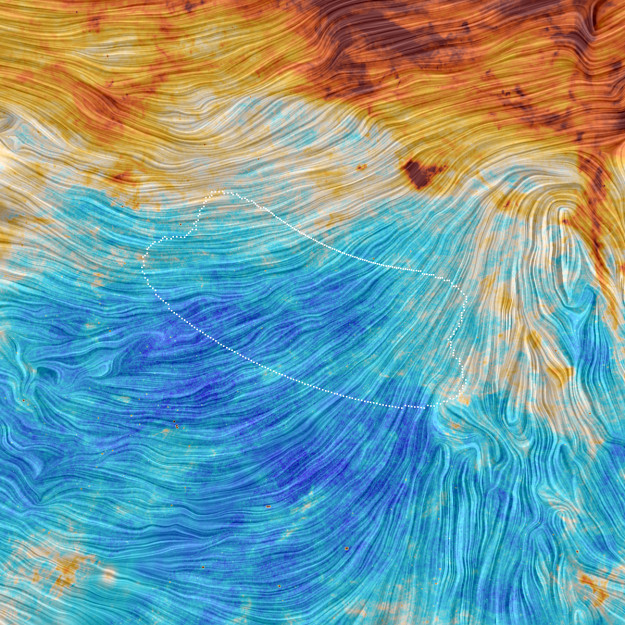Space: Gravitational waves beat a retreat after 'evidence' points elsewhere, to interstellar dust

Gravitational waves continue to remain elusive after a particularly strong piece of evidence proving their existence has been shown to be the result of interstellar dust.
Polarised light detected in a patch of the sky last year was concluded to be evidence of these 'ripples' in space time arising from the brief and dramatic cosmic inflation following the Big Bang.
These ripples or gravitational waves tweaked the polarisation of light in the background radiation left after the Big Bang, it was concluded using data from the BICEP2/Keck experiments in 2014.
But since then, a joint analysis of data from the Planck space mission and the ground-based BICEP2 has found no conclusive evidence of gravitational waves.
Instead, the data suggests much of the signal polarisation arises due to dust in the Milky Way and not the relic or fossil radiation called the cosmic microwave background (CMB), emitted shortly after the birth of the Universe 13.8 billion years ago.
"Searching for this unique record of the very early Universe is as difficult as it is exciting, since this subtle signal is hidden in the polarisation of the CMB, which itself only represents a feeble few percent of the total light," says Jan Tauber, ESA's project scientist for Planck.
A particular signature of cosmic 'inflation' – a very brief accelerated expansion that the Universe experienced when it was only the tiniest fraction of a second old, is that arising from gravitational waves generated during the inflationary phase.
These ripples can polarise the microwave radiation.
A particular mode of polarisation, the B-mode, is believed to indicate the Universe's early inflation. Such a patch of polarised light was seen in the southern sky last year, and was traced to gravitational waves, in theory.
But now it turns out such polarisation of light can also result from interstellar dust.
Gas and dust in the Milky Way radiate at frequencies similar to those of the CMB, and their emission affects the observation of the oldest cosmic light.
Very careful data analysis is needed to separate the foreground emission from that of the CMB.
"When we first detected this signal in our data, we relied on models for galactic dust emission that were available at the time," said John Kovac, a co-principal investigator of the BICEP2/Keck collaboration at Harvard University, Cambridge, Massachusetts. "These seemed to indicate that the region of the sky chosen for our observations was relatively devoid of dust."
The BICEP2/Keck experiments collected data at a single microwave frequency, making it difficult to separate the emissions coming from the dust in the Milky Way and the CMB.
However, Planck observed the sky in more detail with nine microwave and sub-millimetre frequency channels, seven of which were also equipped with polarisation-sensitive detectors.
Moreover, Planck mapped the CMB over the entire sky from space, while BICEP2/Keck focused on one patch of crisp sky over the South Pole.
The final results showed that most of the B-mode signal, but not necessarily all of it, could be explained by dust in our Milky Way.
"The new upper limit on the signal due to gravitational waves agrees well with the upper limit that we obtained earlier with Planck using the temperature fluctuations of the CMB. The gravitational wave signal could still be there, and the search is definitely on," said Brendan Crill, a member of both the BICEP2 and Planck teams from JPL.
For now, an imprint of the cosmic inflation remains undetected, and mere theory.
© Copyright IBTimes 2025. All rights reserved.





















